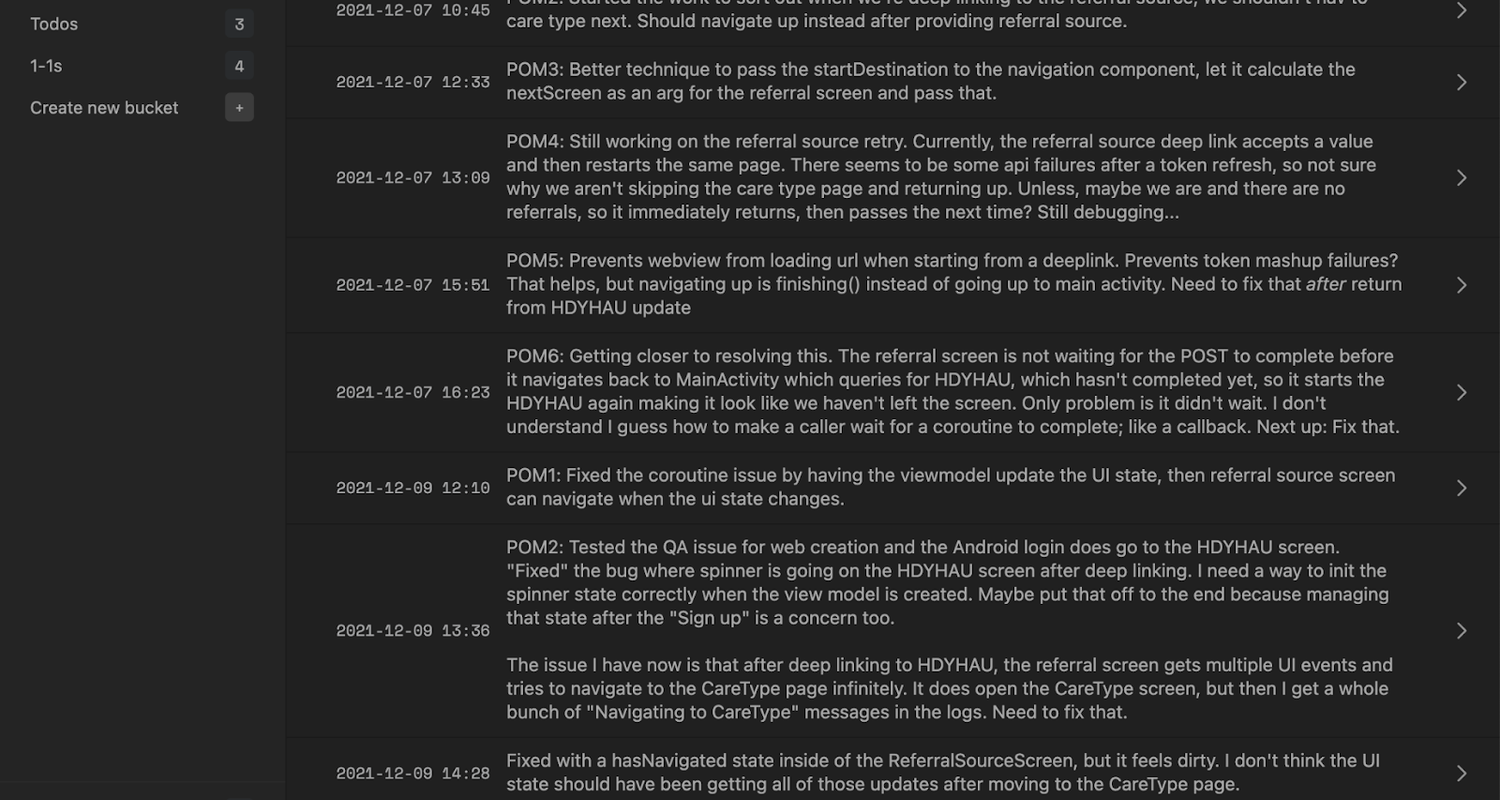The Pomodoro Method is a productivity technique where you chunk your time into 30 minutes blocks and allocate 25 minutes for focused time and 5 minutes for break. Each 30-minute block is called a “Pomodoro.”
The technique was created by Francesco Cirillo while he was at college in the late 1980’s. Cirillo found that viewing your time through the lens of Pomodoro “alleviates anxiety and in doing so leads to enhanced personal effectiveness.” In short: it’s a way to get things done.
It’s worth noting that — according to Cirillo — a ’true’ Pomodoro doesn’t allow for interruptions. With each Pomodoro, you exclusively dedicate your attention to the task at hand for 25 minutes. Nothing else. It’s important to try and create an uninterrupted stretch of time. Maybe set your slack status to let folks know you’re locking in. Or block off time in your calendar manually or with a tool like Clockwise.
But — in describing a ’true’ Pomodoro — Cirillo is describing an ideal. Someone learning how to work at home over the course of the pandemic might not have had the luxury of only being able to focus on completing a single, specific task over the course of twenty-five minutes. Reddit users have spoken about how 25 minutes is too short a time to get ‘stuck into’ work, but one consistent comment is that even using part of the Pomodoro technique is an effective way to improve productivity.
Fred Medlin — a developer at Sittercity — has worked remotely for a little over 4 years. Each working week, he estimates how many pomodoros each task will take, and then tracks his work in a spreadsheet.

“At the end of a Pomodoro,” he said, “I doc in Stashpad how it went and usually what to do next. I do 25/5 pomodoros because … life. I used to do 50/10 but my time is so much more fragmented in the past year. I only do pomodoros when I have at least a 90 minute block of focus time and I only use it for sprint work.”
“I don’t do POMs for anything other than coding right now,” he continued. “Most everything else I can walk away from, or do little tiny bits of work without an interruption penalty. Coding is definitely different. What I’ve found is that [Pomodoros] actually slow me down but having some documentation for each one has been golden for tracking how a sprint went. The little bit of time I spend capturing things in Stashpad pays dividends later.”
Medlin isn’t the only one who has found modifying Pomodoros to be helpful. One Reddit user who suffered from depression and migraines found that a ‘Reverse Pomodoro’ helped them get work done. Another user found that only allowing for 25 minutes of work interrupted their concentration. Changing the 25 minute marker of the ‘Pomodoro’ into something else allowed them to study more efficiently.
Besides developers and students, the Pomodoro Technique is useful for artists as well. In the clip above, taken from the Netflix show Abstract, we see what happens when an illustrator shows up to work again and again. Artists don’t just rely on inspiration or planning — they show up to work and focus on working. This leads to results. Paul McCartney showed up to work, and — through dedication and focus — pulled the song ‘Get Back’ out of the air. The writer Richard Mirabella worked on his novel while holding down a full time job, tackling his novel thirty minutes at a time, and this also led to results.
Why is the Pomodoro important now, during a period of time still so marked by the pandemic? As Derek Thompson pointed out in his recent podcast for The Ringer, the boundaries between work and non-work have grown ’leaky’: we drift onto the web at work. Our phones are always with us. We work on an excel sheet while sitting on the couch at home. Our focus is continually being challenged again and again. (One study focused on the impact of Covid in the Netherlands posits that “when work-life boundaries are blurred, people are less happy.”)
The Pomodoro technique gives you a structure to better manage the blurring between work and life. It’s effective, easy to use, and something you can try today.
Go ahead. Get started. We’ll set the timer.


